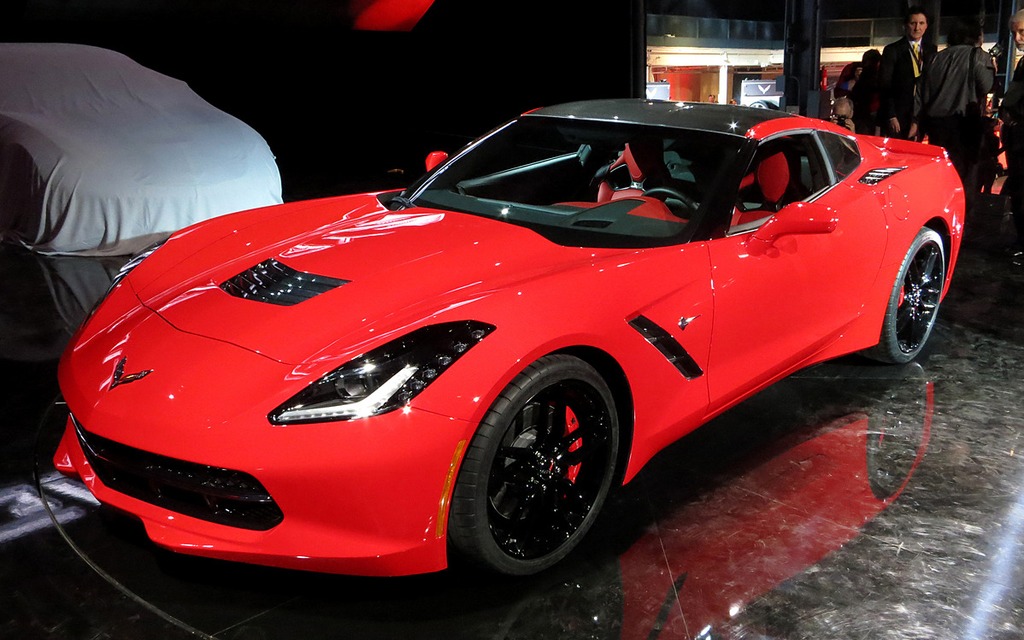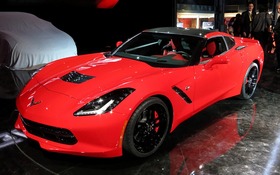The new Corvette Stingray kicks off in style
They pulled out all the stops to launch the seventh generation of the Corvette, renting out a huge industrial space the night before the first press day for the Detroit Auto Show.
The spectacular kick-off event started with laser projections on a Corvette draped in a white veil, along with interviews with the C7’s creators on a giant pivoting screen and a rock guitar solo.
Next up, Mark Reuss, President of General Motors North America, revealed the fact that the new American sports car would be called the “Stingray.” This legendary name first belonged to the celebrated 1963 “Split-Window” Corvette that marked the debut of the vehicle’s second generation.
As expected, the bright red Stingray was met with enthusiastic cries from the crowd, which undoubtedly included a large number of GM employees and workers from the Bowling Green plant in Tennessee, where the Corvette is produced.
The new Corvette Stingray comes with the same basic architecture as its predecessors. It still features a front-engine V8 and rear-wheel drive, but all the components have been refined.
According to the Corvette Group, the new aluminium chassis is 57% more rigid and 45 kg lighter. Another 17 kilos were shed with the inclusion of a carbon fibre hood and roof, molded resin body panels, and composite underbody panels.
The LT1 engine, the most advanced version of GM’s small-block engine, is now lighter, more compact and more powerful. With 450 horsepower and 450 pounds-foot of torque, it’s the most powerful naturally aspirated V8 to ever equip a Corvette.
This engine can be mated to a six-speed automatic gearbox with wheel-mounted shifters or a seven-speed manual, like in the latest Porsche 911.
This gearbox allows you to downshift smoothly with an electronic mode that pushes the V8’s revs and ensures that it perfectly adjusts to the lower gear. This system is already used in the Nissan 370Z.
The larger disc brakes are grasped by four-piston calipers. They are even bigger (345 mm) on the new Z51 edition’s front wheels. This vehicle is prepped for the track and includes the third generation of the magnetic shocks that were pioneered by Corvette and have since been used by Ferrari and Audi.
The Stingray is also equipped with an electronic anti-skid system with five different modes for all weather conditions and driving styles.
The Corvette Group also bestowed the new Stingray with an all-new plush interior. This includes new seats that finally offer enough side bolstering to counter the vehicle’s prowess.
Now, we just have to drive it!












